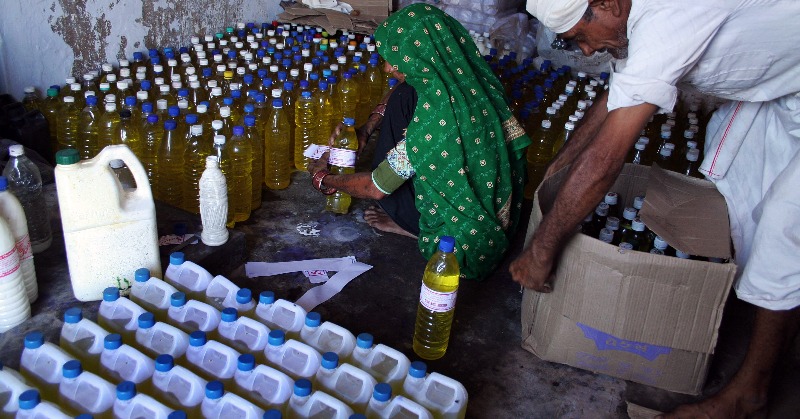The National Crime Records Bureau (NCRB) and the Rajya Sabha data show that Delhi reported 32 cases of acid attacks between 2018 and 2021. The attack on a 17-year-old girl in Dwarka has brought the issue again and the national capital’s lack of a clearly defined rehabilitation policy for victims.
In 2015, the Supreme Court asked the Centre to step in and ask states to control and regulate the retail sale of acid. Acid sales in Delhi require a license on paper. A buyer should show a character confirmation and a reason to purchase acid.
Hydrochloric, sulphuric, and nitric acid are easily available in the market. Any illegal activity is a non-bailable offense, and the sale or purchase of acids is monitored by the local administration. The perpetrators may be punished with fines, imprisonment, or both, but the survivors’ lives will be forever altered, and there may be little chance of recovery.
Jump To
![]()
Acid Attacks in India

AFP/Representational Image
According to the National Crime Records Bureau, India recorded 1,483 acid attacks between 2014 and 2018. The year 2017 saw the most acid attacks in these five years, with 309 attacks.
In 2017 and 2018, 596 acid attack cases were reported, with 623 victims, but only 149 people were charged each year. This is less than half of the incidents that occur annually. The year 2014 saw the fewest cases, with 201 people being charged, the lowest number (244) ever.
From 2014 to 2018, Delhi, Uttar Pradesh, and West Bengal consistently ranked among the 10 worst states for acid attacks. In the past five years, acid attacks have accounted for 42% of the victims in these three states alone.
The most cases that went to trial were 734 in the year 2015. The conviction rate of 45.4% appears better than other crimes against women at first glance. However, only 33 of the 734 cases that went to trial were resolved.
Laws dealing with acid attacks in India
Once the Supreme Court observed that “acid attacks are worse than murder.” The Criminal Law (Amendment) Act of 2013 included provisions for acid attacks in the Indian Penal Code of 1860. In this, Explanation 1 of Section 326B defines an acid as “any substance which has acidic or corrosive character or burning nature, that is capable of causing bodily injury leading to scars or disfigurement or temporary or permanent disability.”

AFP/Representational Image
Using acid to cause permanent or partial harm, deformity, burns, or disablement is addressed in Section 326A of the Indian Penal Code of 1860. Under this section, the minimum sentence is ten years in prison, but it can be increased to life in prison and a fine that should be proportional to the victim’s medical costs.
Section 326B of the Indian Penal Code, 1860, deals with deliberately throwing or attempting acid. The individual will be punished with a fine and a minimum sentence of five years in prison, which can be increased to seven years.
According to section 357C of the Criminal Procedure Code, 1973, all the local, public, and private hospitals are directed to provide free-of-cost emergency first aid to the victims.
Government aid to victims

AFP/Representational Image
Under the National Legal Services Authority (NALSA) Scheme, 2016, the Indian government’s relief funds provide the necessary immediate assistance. The Supreme Court has directed that acid attack victims receive free treatment and at least 3 lakhs in compensation. The amount has been increased by the government to up to ten lacs, depending on the severity of the damage, and the family receives the same amount if the victim dies.
When determining compensation, the gravity and seriousness of the offence must be taken into account. The court has mandated that reimbursement for rehabilitation costs be made within two months, as stated by the National Commission for Women. Under the Prime Minister’s National Relief Fund, female victims of acid attacks receive one lakh rupees.


